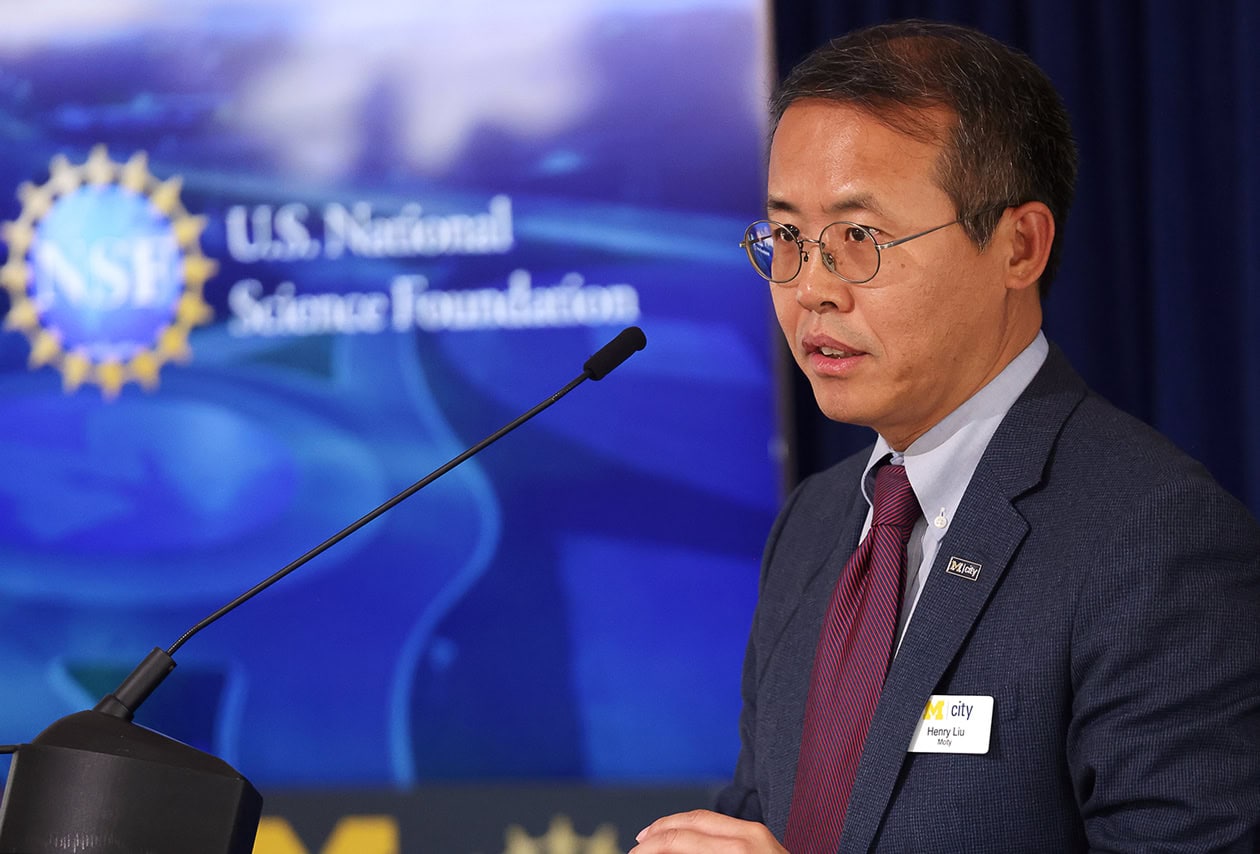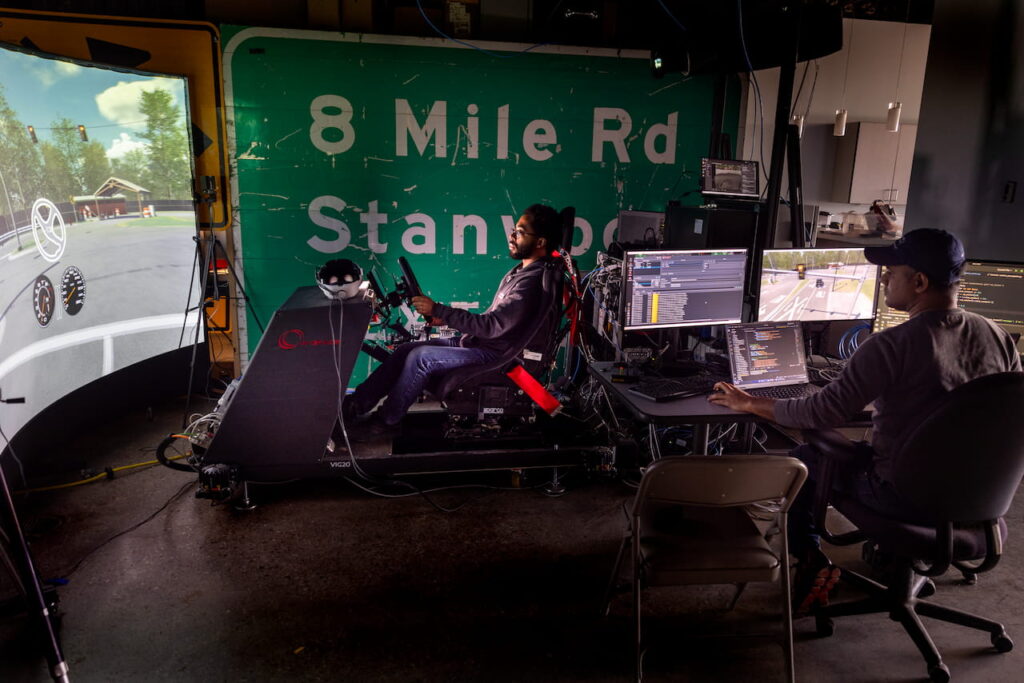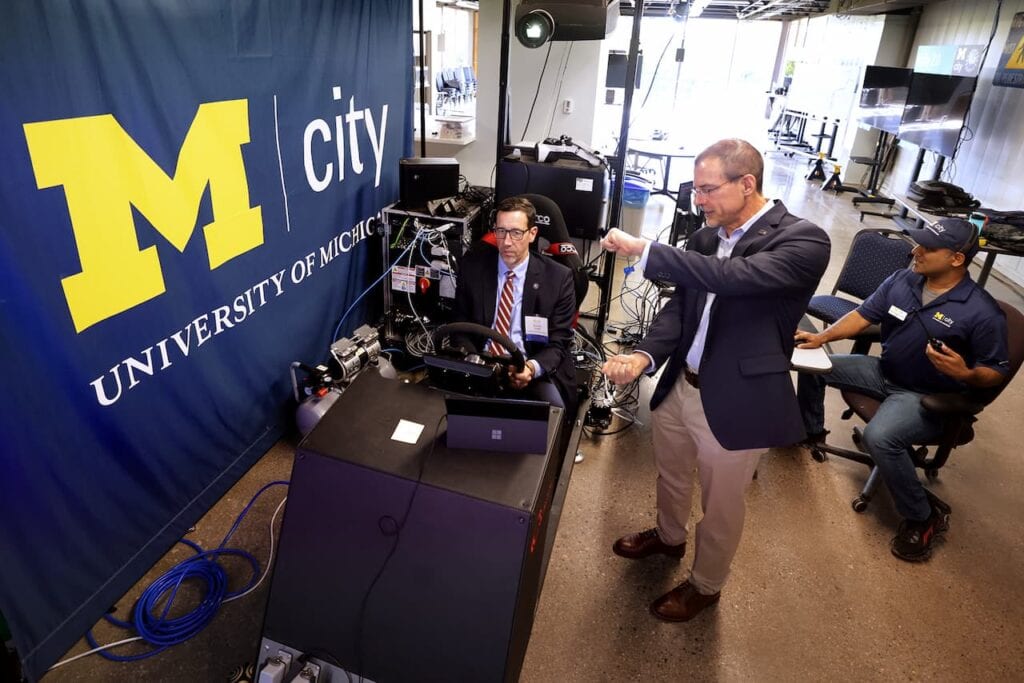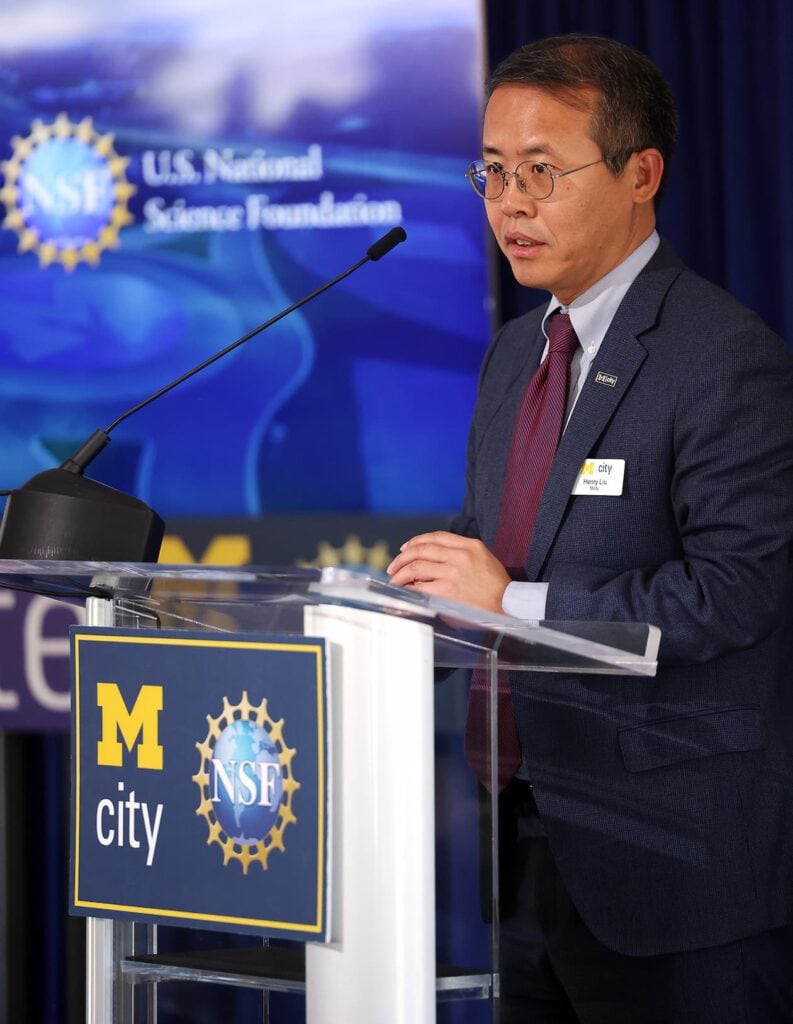
Mcity opens for remote testing of autonomous vehicle technologies, calls for federal standards
The opening coincides with a new industry partnership project announced at the NVIDIA AI Summit.

The opening coincides with a new industry partnership project announced at the NVIDIA AI Summit.
Experts
As Mcity begins welcoming researchers in autonomous and connected vehicle technologies from around the U.S. to be remote users of its physical and virtual testing environment, its leadership is calling for federal standards for safety testing, arguing that the lack of clear goalposts is hampering development.
Following two years of upgrades, the University of Michigan’s hub for autonomous testing officially kicked off its remote program today with a series of demonstrations for industry and state and federal government officials. By allowing outside researchers to tap into Mcity research vehicles and testing technologies from afar, U-M seeks to accelerate the development of autonomous vehicle (AV) technologies to enable safer and more efficient transportation. Funded by the National Science Foundation, the capabilities are initially available to academic researchers.
“This is particularly valuable for academic institutions, including many that serve minority students, that do not have the resources of large, public institutions like U-M,” said Henry Liu, a U-M professor of civil and environmental engineering and director of both Mcity and the Center for Connected and Automated Transportation. “We call it Mcity 2.0—the next generation automated vehicle test facility.
“We believe Mcity 2.0’s capabilities will expand the volume and increase the speed of AV research that will be conducted and published. This could help put more refined, safer AVs on our roads sooner.”
In The News

At the same time, a new Mcity partnership announced today at the NVIDIA AI Summit in Washington, D.C. aims to advance its remote testing capabilities for industry as well as academic users. Mcity simulation tools are being tapped for a new project in partnership with NVIDIA and non-profit research managing firm MITRE. The goal is a full simulation version of Mcity that industry and academic researchers can use to rigorously test and validate AVs, accelerating their development and adoption.
In the coming year, Mcity plans to assist 10 research teams from academic institutions in the U.S. with their testing needs. Researchers can submit proposals to Mcity.
By connecting to Mcity’s cloud-based digital infrastructure, researchers operating from their home bases can test their autonomous algorithms in virtual and mixed reality environments. Using 5G wireless communications, they can control physical vehicles and traffic signals on Mcity’s test streets, and receive real-time data in return—all while protecting proprietary information.

“We invite researchers from across the country to connect with us and join the effort to accelerate developing and deploying connected and autonomous vehicles that will make transportation safer, cleaner and more accessible,” said Karen Thole, the Robert J. Vlasic Dean of Engineering. “Please add your brain power to advancing tomorrow’s technologies.”
Mobility officials have touted AVs, along with connected vehicles and infrastructure, as a path to safer, more efficient and equitable transportation. A great deal of research remains ahead before the technologies will produce everyday benefits for a large portion of the population.
While Mcity looks to accelerate that research, U-M researchers see federal leadership—in the form of testing standards and funding—as crucial to keeping it on track. Several unanswered questions lie at the heart of the matter, including:

“Typically, regulation follows innovation,” said Liu, Mcity director. “With AVs, however, the lack of a federal safety testing framework has created uncertainty that is thwarting innovation and delaying the adoption of technologies that we know can save lives and improve the quality of life for millions of people who do not have reliable access to transportation.”
Mcity has developed a two-part methodology for evaluating AV safety, called the Mcity Safety Assessment Program. The first component tested driving algorithms’ basic competency in ordinary traffic scenarios. The second component challenged the software with a diverse set of dangerous driving scenarios—representing those that most often result in crashes, in crashes, injuries and fatalities.
Opened in 2015, Mcity was the world’s first purpose built-proving ground for connected and automated vehicles. In 2022, a $5.1 million grant from the National Science Foundation helped U-M develop Mcity’s digital infrastructure—leading to Mcity 2.0.
“One like-minded partner that has supported our work for decades is the National Science Foundation, and we thank them for being here today,” said Brad Orr, associate vice president for research in the U-M Office of Research. “Researchers across U-M look to the NSF for the critical support they need to help strengthen our economy, enhance the nation’s security, and advance knowledge to sustain global leadership.”